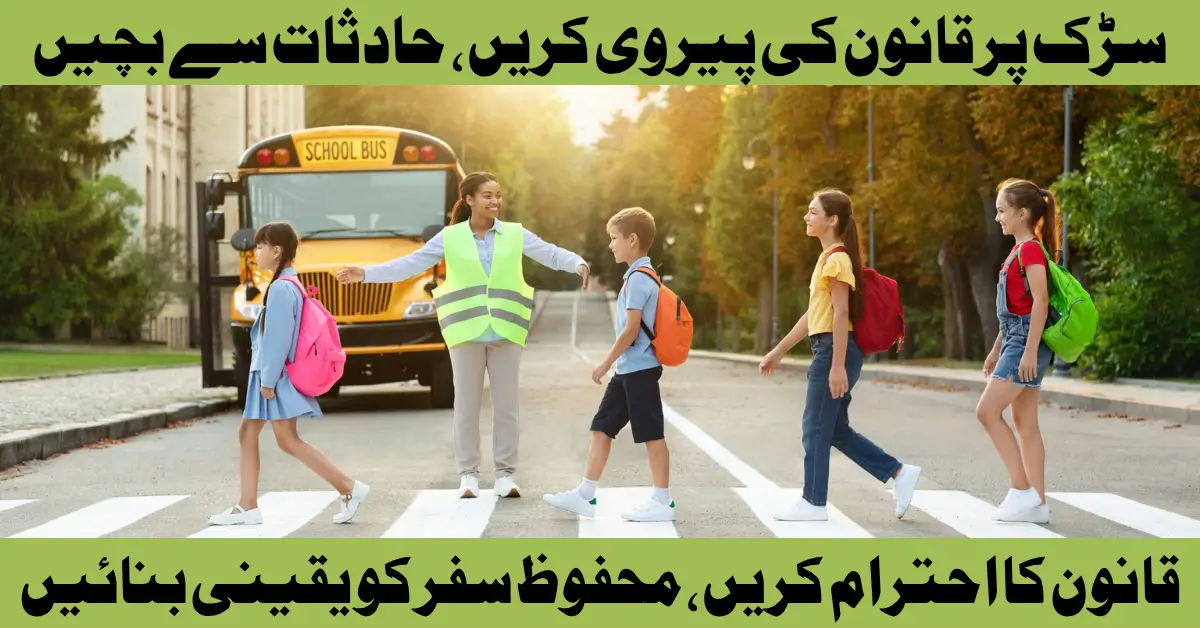Safety Rules for Walking and Crossing
The Traffic Police in Punjab has two main parts:
- Traffic Wardens (wearing grayish-blue uniforms) work in five major cities: Lahore, Rawalpindi, Faisalabad, Multan, and Gujranwala. They are part of the Punjab Traffic Wardenhttps://8171bispalertspk.com/ Service and manage traffic in these city districts. Safety Rules for Walking and Crossing
- Regular Traffic Police (wearing white shirts and blue trousers) operate in the remaining 31 districts of Punjab. Safety Rules for Walking and Crossing

Supervision Structure:
- In Lahore, the CTO works under the direct control of the Capital City Police Officer.
- In the other 9 regions of Punjab, an SP Traffic Region supervises traffic matters.
- In each district, an ASP or DSP is posted as charge of Traffic, reporting administratively to the SP Traffic Region, but working operationally under the local District Police Officer.
At the provincial level, a DIG of Traffic Police Punjab handles regional traffic operations under the command of the Additional Inspector General of Police Traffic, based at Traffic Headquarters, Qurban Lines, Lahore. Safety Rules for Walking and Crossing
Fatima Fertilizer’s ‘Sarsabz Tabeer’ Starts Healthcare Program with MASH and Punjab Government
Mission
- Our goal is to keep roads safe and help anyone in trouble on the road. We are committed to treating all road users with respect, being fair, and always acting ethically.
- We aim to keep traffic flowing smoothly by using limited resources and staff wisely.
- We also plan to gradually adopt modern technology to enforce traffic laws and manage traffic better.
Vision
- To urgently educate the public about traffic laws.
- To ensure smooth and uninterrupted traffic flow using the least number of staff.
- To gradually adopt modern technology for better traffic control and law enforcement.
Car Drivers
Always keep your driving license and vehicle registration documents with you.
- Plan your route and allow enough time for your journey.
Before you start driving, make sure to check:
- You have enough fuel for the trip.
- Headrests are set correctly to reduce the risk of neck injuries in case of an accident.
- All lights are working properly.
- The brakes, windscreen wipers, tires, and the emergency exit door are in good working condition.
PSV Drivers:
Always carry your driving license, vehicle registration certificate, fitness certificate, and route permit while driving.
Before starting your journey, check the following:
- You have enough fuel for the trip.
- All lights are working correctly.
- The brakes, windscreen wipers, emergency exit door, and tyres are in good working condition.
Motorcyclists Safety Instructions
Motorcycle riders are more likely to get seriously injured in accidents because they have no physical protection, especially at speeds above 15 km/h. Even a small collision can cause serious harm.
To stay safe, follow these guidelines:
- Drive Prepared: License and Registration First
- Never carry more than one passenger. They must sit properly on the seat and keep both feet on the footrests.
- Make yourself highly visible from all sides:
- Wear a white or brightly colored helmet.
- Use fluorescent or reflective clothing or strips.
- Keep your headlights on, even during the day, to be more noticeable.
- Wear a white or brightly colored helmet.
Important Facts About Helmets
A good helmet should:
- Do not block your vision
- Not affect your hearing
- Be lightweight
- Not cause tiredness while wearing it
- Not causes skin problems
- Not increasing the risk of neck injuries
Bus & Truck Drivers Key Rules
- Keep Left to Drive Safe
- The speed limit is 40 km/h, and speed governors are mandatory.
- Overtaking is not allowed for buses and trucks.
- Buses must use the bus lane and stop inside the bus box at stops.
- Buses arriving later should line up behind the first bus, not beside or ahead of it.
Towing & Loading Guidelines:
- Do not tow or load more than your license or vehicle allows.
- Make sure the load is secure and not sticking out dangerously.
- Distribute weight evenly, with heavier items over the axles to maintain control.
- If the vehicle starts to sway, slow down gently by easing off the accelerator.
Bus Commuters
Never board or get off a moving bus.
- Always form a queue while boarding.
- Inside the bus, stay calm and avoid loud noises.
- Hold the handrail if standing.
- Don’t distract the driver while the bus is moving. Ask questions before or after the journey.
- Behave respectfully and responsibly to ensure everyone’s safety and comfort.
Cyclists – Safety Checklist
Before riding on the road, make sure you can:
- Ride in a straight line for 10 meters
- Stop suddenly without falling
- Signal with one hand while riding
- Look back and turn right safely
Before going out, check:
- Reflectors are on wheels, pedals, and mudguards
- The brakes work properly
- The bell rings clearly
- The seat is adjusted so that your feet touch the ground
Children – Road Safety Tips
- Children should not go alone on the roads until they fully understand road safety rules.
- Parents and teachers must set a good example by following these rules themselves.
While Walking to School:
- Use footpaths; if none, walk on the right side of the road.
- Don’t run or rush on the road.
- Cross at the Marked Places Only
- Cross only at a green signal or when a policeman signals.
- Be careful when crossing between parked vehicles—you may not be visible to drivers.
- On one-way streets, wait until all lanes are clear.
- Never cross at curves or corners, as drivers may not see you in time.
- Do not run across the road; you might slip or fall.
Answers to the 10 Major FAQs Widowed Women Ask About CM Punjab Bewa Sahara Card Scheme
